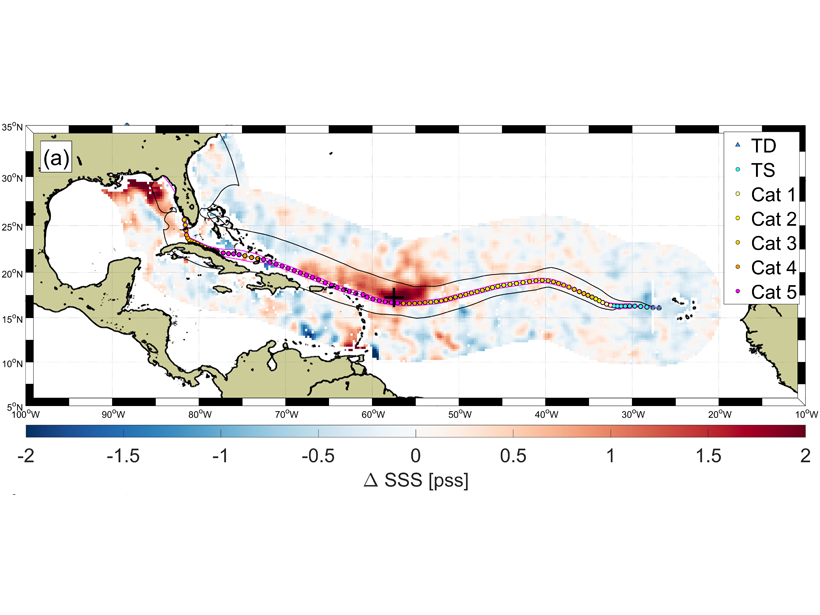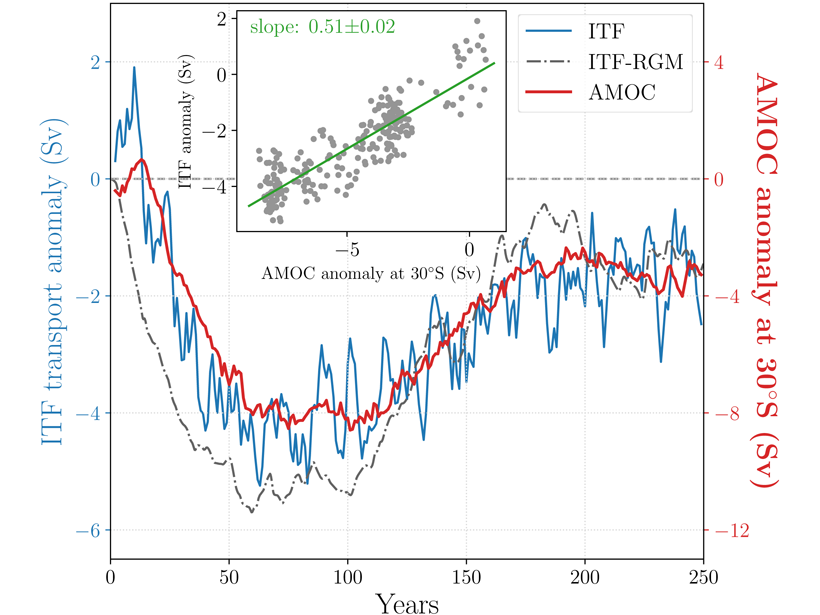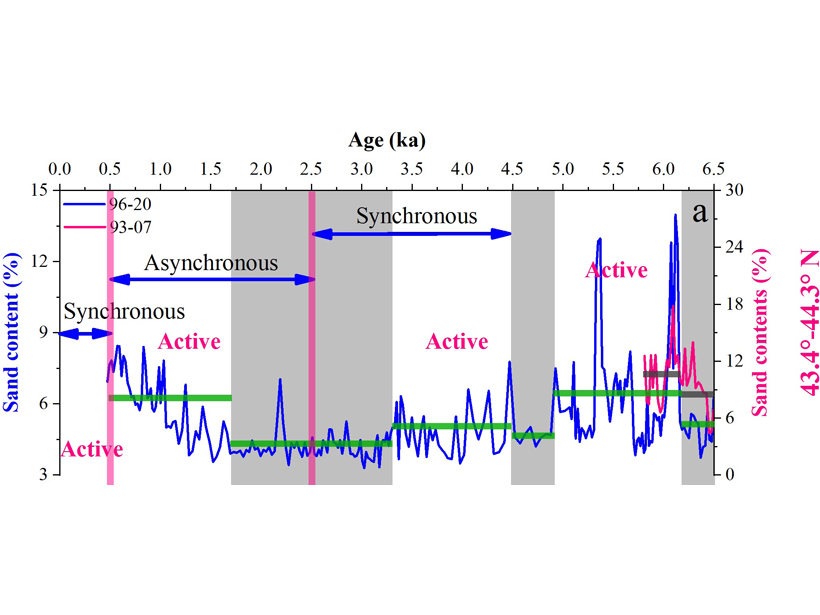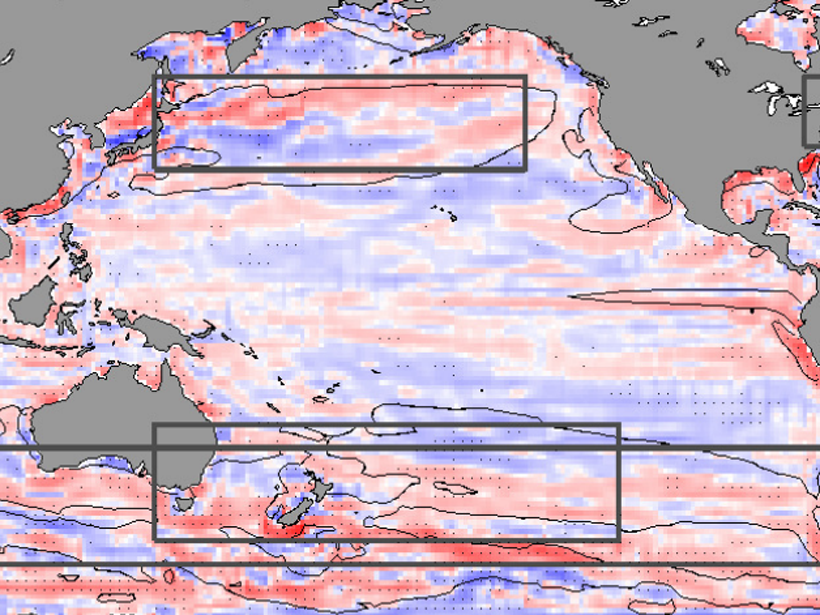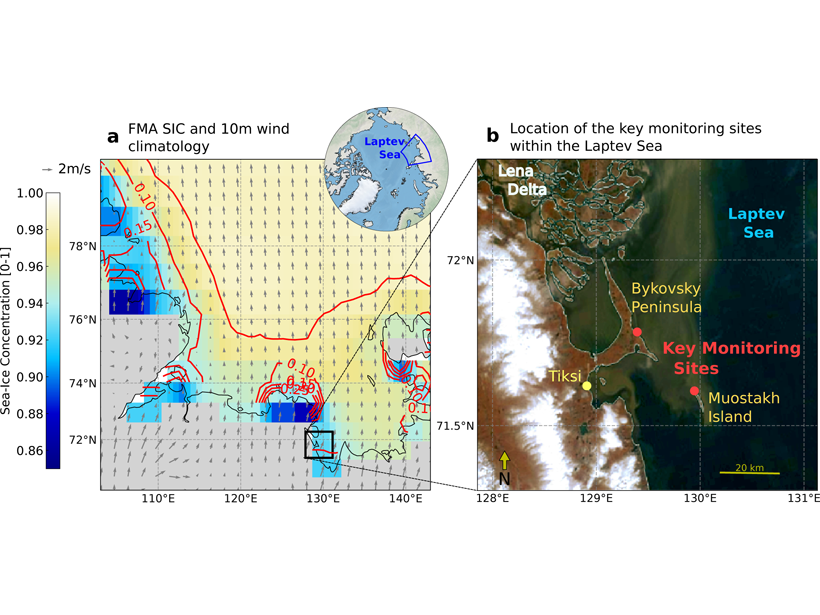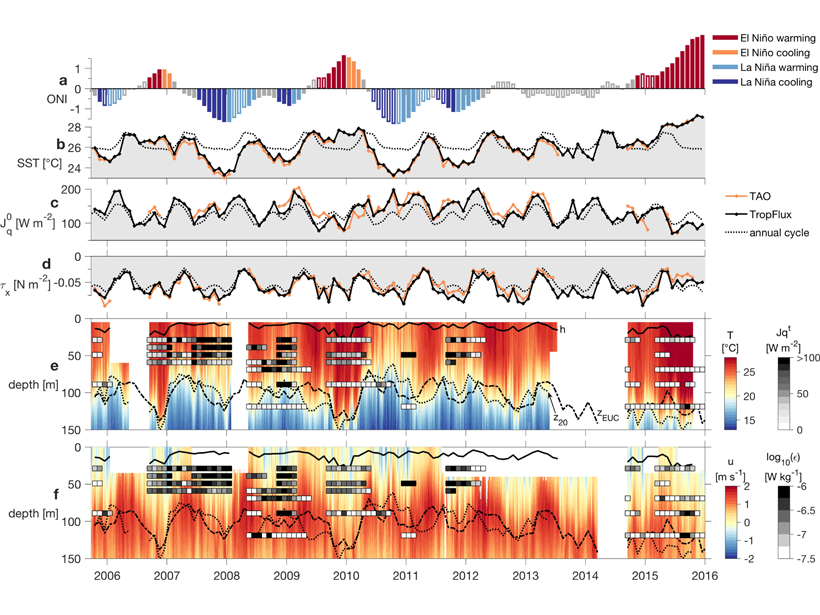Unique air and ocean surface observations of the Southern Ocean from a 22,000 km, 196-day circumnavigation around Antarctica by an Uncrewed Surface Vehicle.
J. Sprintall
Editor, GRL
Hurricanes Wakes Show Asymmetrical Response in Ocean Salinity
It’s well known that hurricanes can substantially impact ocean surface temperature, but a new study shows they can also induce an ocean salinity response in unexpected ways.
What Causes Centennial Changes in the Indonesian Throughflow?
Transient long-term changes in the strength of the Indonesian Throughflow are unexpectedly linked to circulation changes in the remote high-latitude North Atlantic.
Abrupt Climate Shifts Change the Latitudes of Storm Activity
A new 6500-year construction of storms combined with other paleo-storm records finds abrupt changes in the Atlantic Ocean circulation impact the latitudinal preference of storm activity.
The Deepest Layers of the South-West Atlantic Ocean are Warming
A unique temperature time series observed over the past decade in the bottom layers of the south-west Atlantic Ocean shows significant variability with long-term warming trends.
Ocean Gyres Observed to Move Poleward
Basin-wide ocean gyres have been observed to be slowly migrating toward the poles and, although natural variations contribute, climate simulations suggest the shift is in response to global warming.
Arctic Coast Erosion Linked to Large-Scale Climate Variability
Changes in rates of Arctic coastal erosion detected from multi-decadal measurements are attributed to the shorter duration in the winter sea ice coverage and large-scale changes in the wind patterns.
Oceanic Mixing Influences Development of ENSO Cycle
Changes in oceanic turbulence act to regulate the sea surface temperature during the evolution of the El Niño Southern Oscillation cycle.
CAT Pictures of Internal Solitary Waves in Indonesian Strait
Huge and rapid subsurface temperature changes associated with propagating internal solitary waves were observed from a moored coastal acoustic tomography (CAT) system in Lombok Strait in Indonesia.
Distinguishing Pacific and Atlantic Contributions to the Arctic
A semi-conservative tracer combining nitrate and dissolved oxygen is more accurate than traditional tracers in distinguishing between Atlantic and Pacific water mass contributions to the Arctic.


